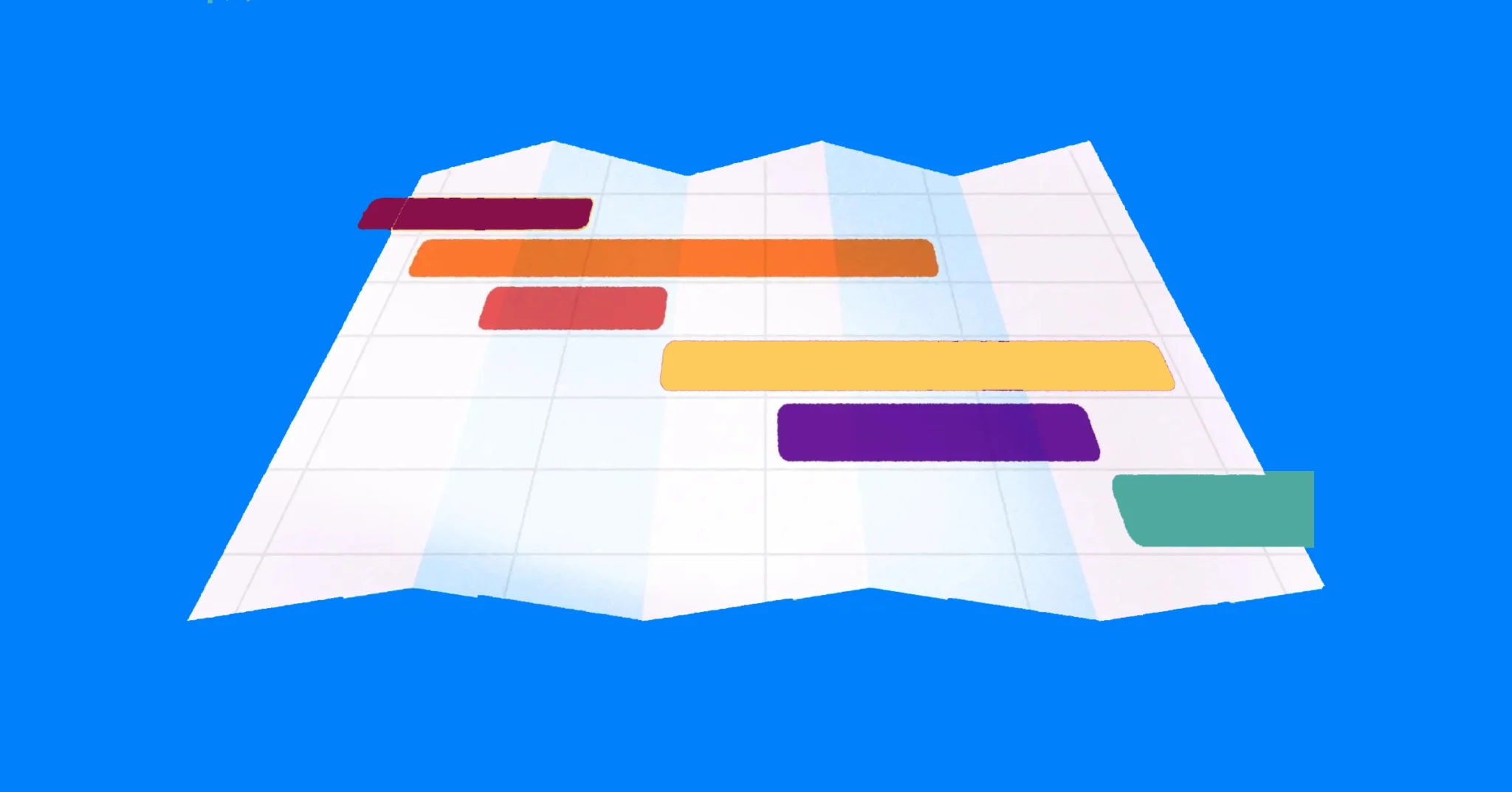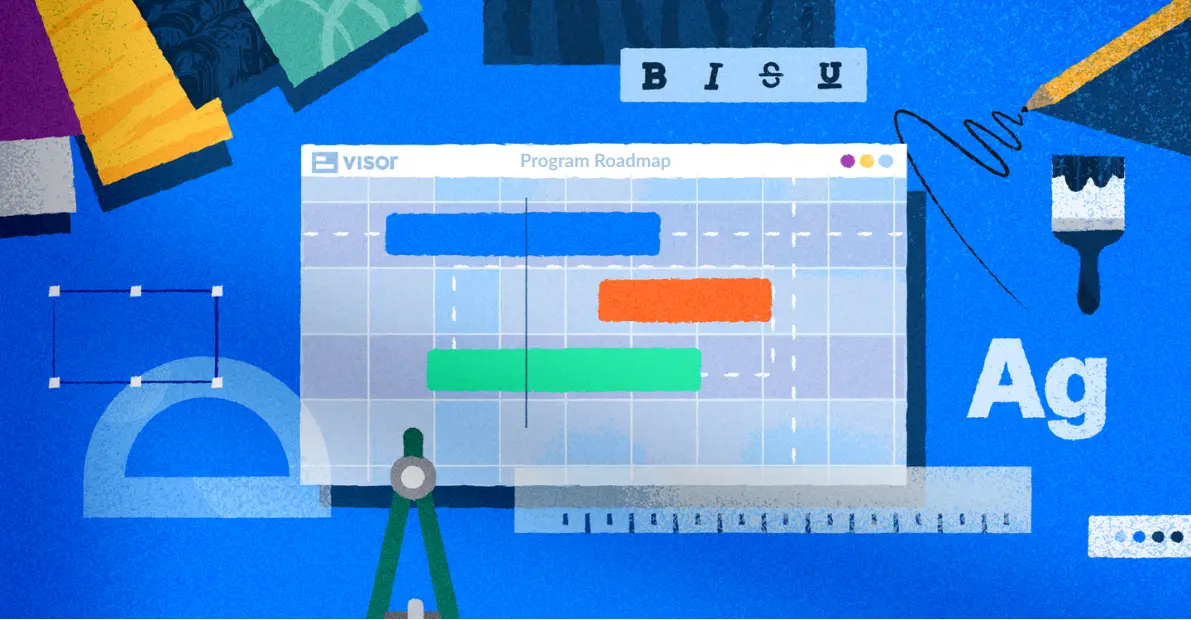
Jira Milestones in Roadmaps: Your Comprehensive Guide
Jira milestones let you mark important moments in your projects, particularly when visualizing data, as in a Gantt chart or roadmap. But there’s a catch – there’s no straightforward way to create milestones using Jira’s built-in roadmaps.
That doesn’t mean you can’t have your milestones and Jira data too. We’re here to show you ways to create a Jira roadmap or Gantt chart with milestones.
In this post, we’ll explain how to add milestones to your Jira data, along with offering answers to your milestone-related questions, including:
- What is a Jira milestone?
- How do you add milestones to Jira data?
- What are some common use cases for milestones in Jira?
If you want a quick and easy way to create Jira Gantt charts with milestones then you should use Visor. Jira users opt for Visor because it enables them to create beautiful Gantt charts which stay in sync with real-time Jira data that can be shared with any stakeholder, even those without Jira access.
This makes it a powerful tool for analyzing your projects and portfolios of projects, and for updating, engaging, and collaborating, with your teams, stakeholders, or clients.
Visor is not a Jira plugin, which means you don’t need to get a Visor license for every Jira user either, which makes it much more cost effective than plugins or Jira’s native Gantt chart or roadmap tools.
Gantt chart Visor using real-time Jira data from multiple Jira projects, complete with colorful milestones:
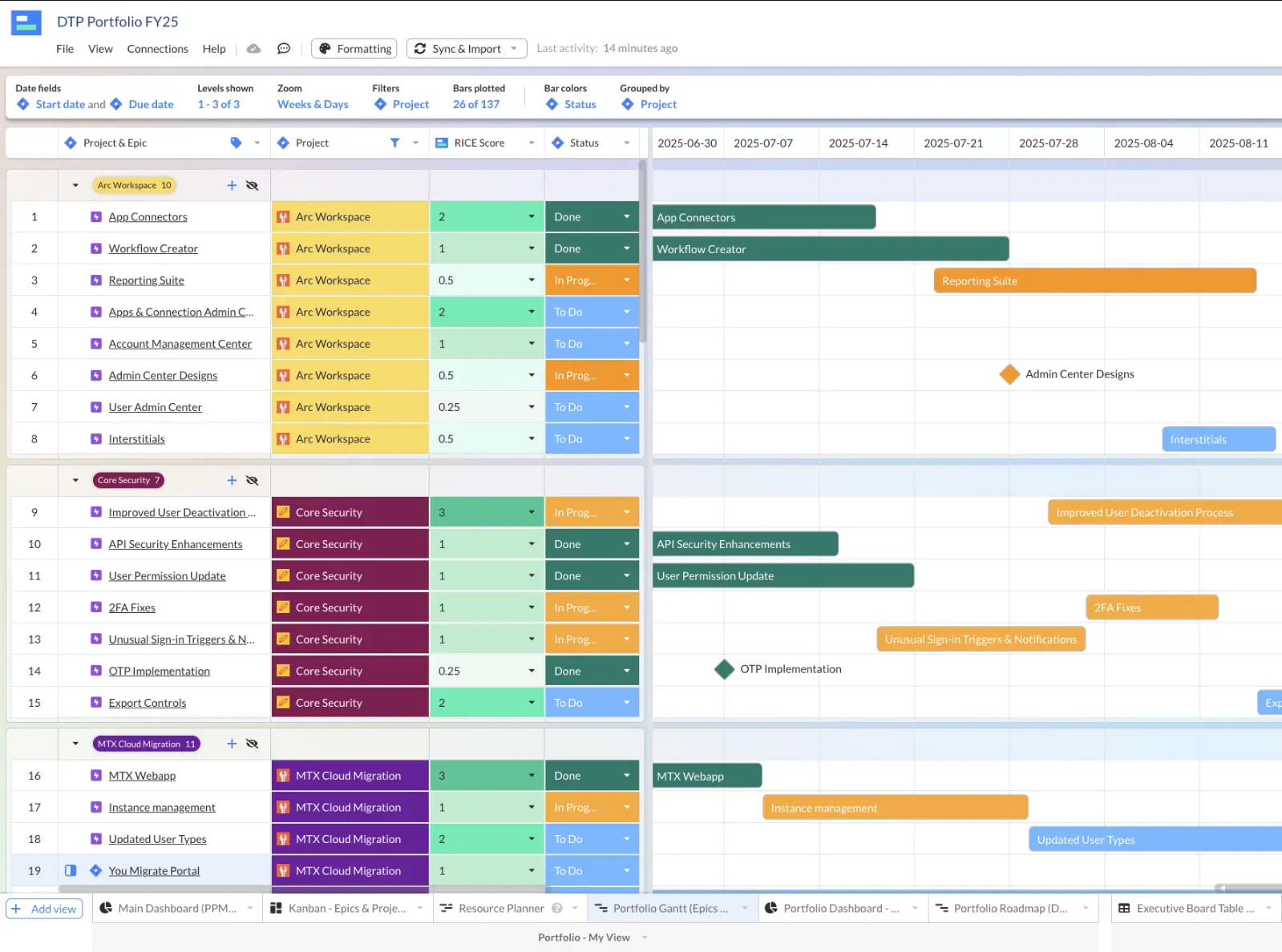
What is a milestone in Jira?
Milestones let you mark significant events or branching decision points in product and project roadmaps.
Jira milestones also let you judge how much work has been done and represent key moments in the lifecycle of one or more projects. In addition, they make your project plans easier for to understand.
Jira users often want milestones to:
- Track “hard” dates
- Break up releases (e.g., MVPs)
- Report target dates to stakeholders
- Help with prioritization
- Provide visual context around external events (e.g. tradeshows)
While 2000+ Jira users have voted for a Jira roadmap milestones feature, Jira does not currently offer this feature. However, there are still workarounds you can use to incorporate milestones with your Jira data.
For instance, Visor syncs with Jira, allowing you to visualize your project data into a roadmap that contains milestones.
What is the difference between an Epic and a milestone in Jira?
Epics and milestones are two different, but related things.
In Jira, an Epic is a big chunk of work that you can break down into smaller chunks, called Issues. Epics can involve multiple teams, projects, and sprints and can help in organizing projects within Jira.
Milestones can be used to mark key dates within product roadmaps, allowing you to visualize important deadlines or other events. Through some workarounds, milestones can display within an Epic. However, one doesn’t necessarily depend on the other, as milestones aren’t part of Jira’s issue hierarchy.
While you can include multiple Epics in a roadmap using Jira’s Advanced Roadmaps (which is available for Jira Premium and Jira Enterprise subscribers), there isn’t a way to create a Jira milestone in any of Jira’s built-in roadmap options. However, apps (like Visor) allow you to circumvent this limitation.
Jira roadmap with milestones, made in Visor:
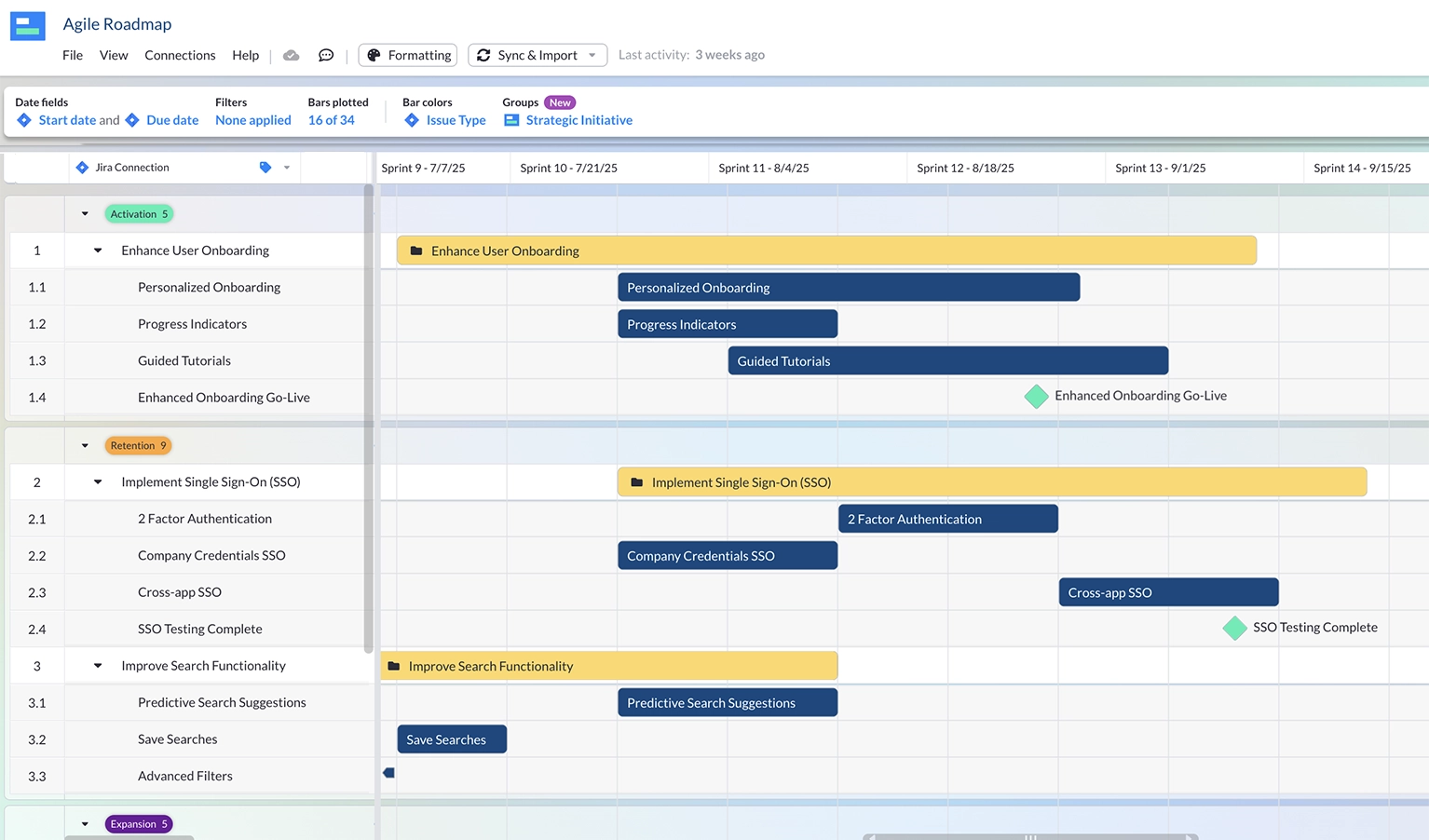
Does Jira have milestones?
There is not a native milestones feature in Jira. Therefore, if you want to add milestones to your Jira roadmap, you’ll need to use an app or use some workarounds.
While there are 5000+ apps in the Atlassian Marketplace that bolster Jira’s functionality, most of them are plug-ins; Atlassian plug-ins require you to purchase a license for everyone using Jira at your organization.
Alternatively, Visor offers an app that allows you to visualize Jira data in a Jira Gantt chart or roadmap – and includes a milestone feature. Best of all, you don’t have to get a Visor license for every Jira user at your company.
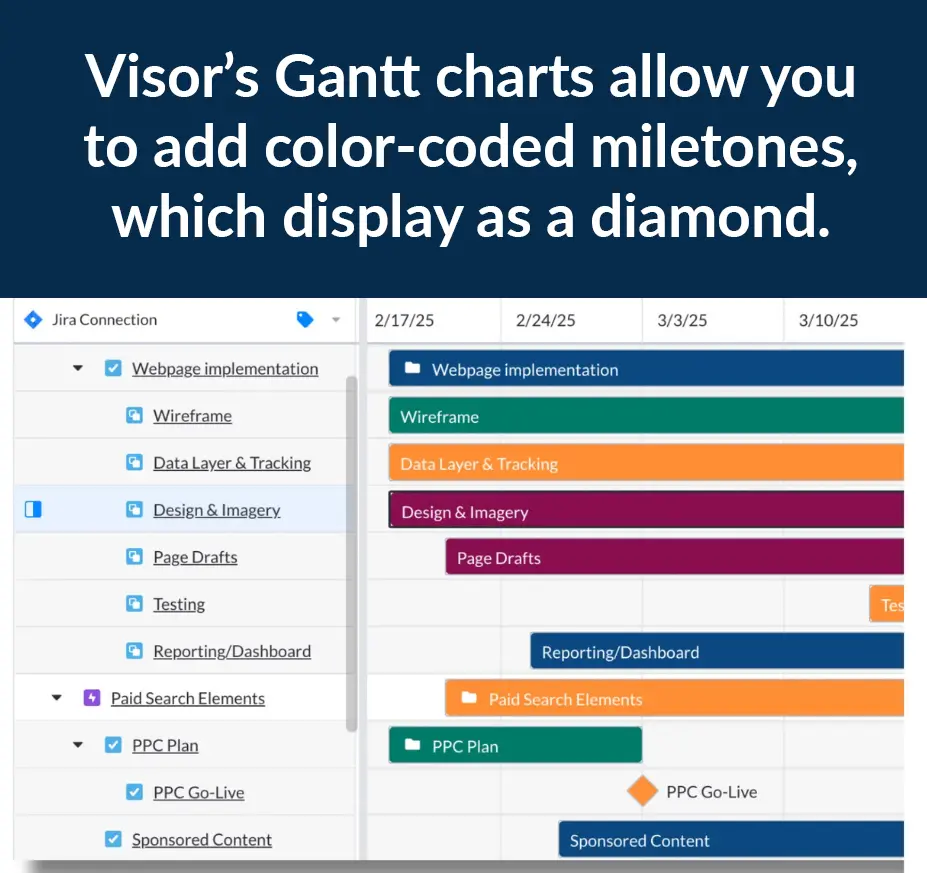
Visor offers templates for project Gantt charts and release roadmap templates that allow you to import Jira data.
How do I add a Milestone to my Jira Timeline or Advanced Roadmap?
There are a couple of basic ways to add milestones to your Jira Roadmaps:
Milestone workaround in Jira
Some users have gotten around the lack of milestones in Jira by creating a custom milestone issue type. This allows you to add milestones to Epics and including as part of your planning.
You can take it further by creating a view in Jira Advanced Roadmaps so that you only see Epics and their milestones. Or simply filter your Timeline view by issue type so that you can only see milestones.
Instructions for Jira Milestone workaround:
- Create a “milestone” issue type
- Add milestones to the Epic they’ll fall under
- Create a view in Advanced Roadmaps that only shows the Epics and their milestones using filters
Creating Roadmaps with Milestones in Visor
Visor offers an easy-to-use milestone feature that allows you to visualize your Jira data with milestones included, so that you can create roadmaps with milestones, and a range of other view types. Visor also allows you to create a two-way sync between Visor and Jira so that your data is always up to date.
Milestones display in Visor’s roadmaps as diamonds:
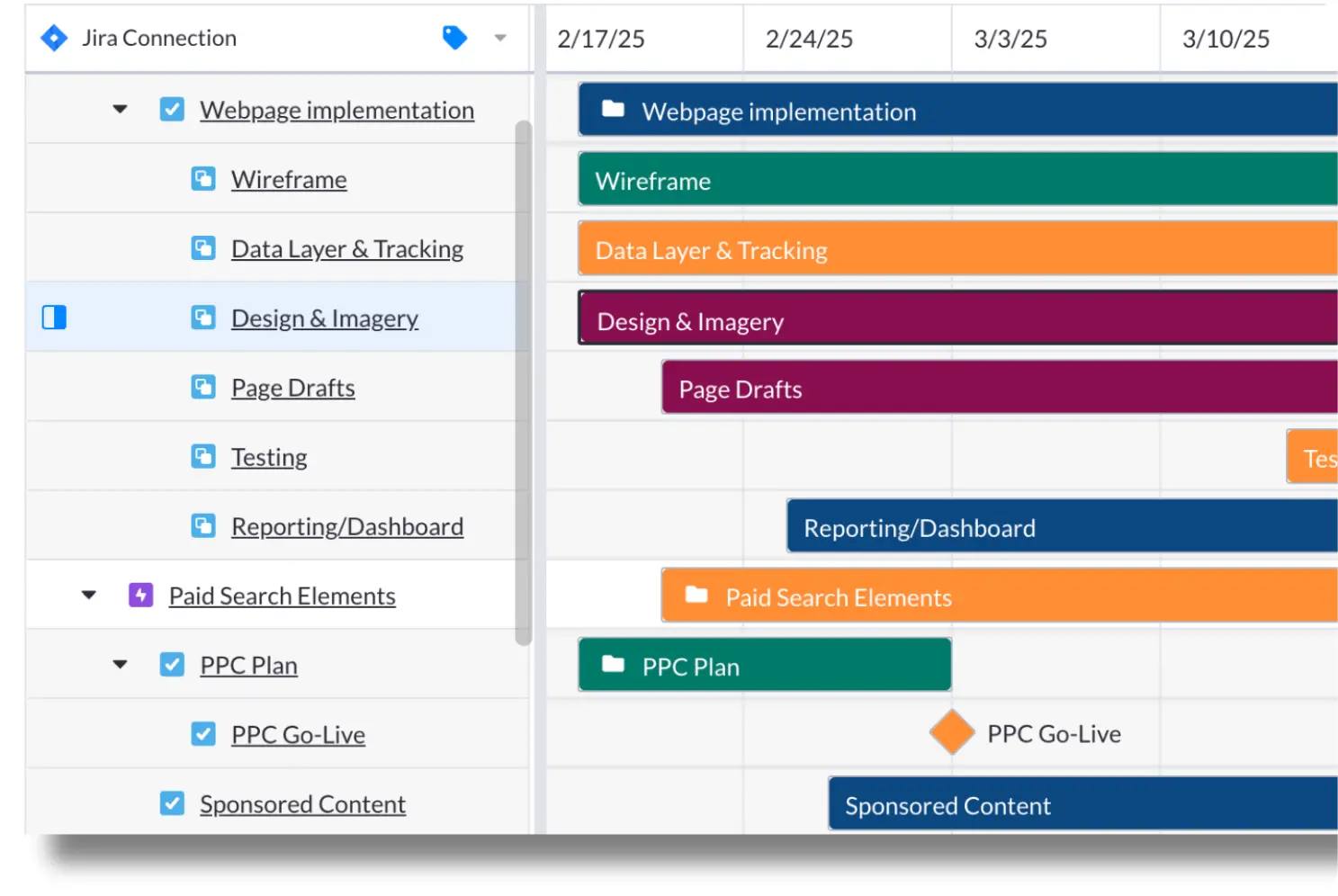
With Visor, the milestones are not truly integrated with the rest of your Jira issues; they are more for displaying your data to others. In fact, you can share the Jira roadmaps you make in Visor with whomever you please (even if they don’t have a Jira license, making Visor a great Jira guest access hack).
However, the milestones created in Visor with your Jira data won’t live in Jira.
Visor offers multiple views, and you can create a milestone in nearly all of them with just a few clicks. Check out our step-by-step instructions below for more info.
How to Create a Jira Roadmap with Milestones in Visor
Step 1: Import your data from Jira into Visor.
Visor offers two-way (or one-way) Jira syncing and will import your nested Jira data.
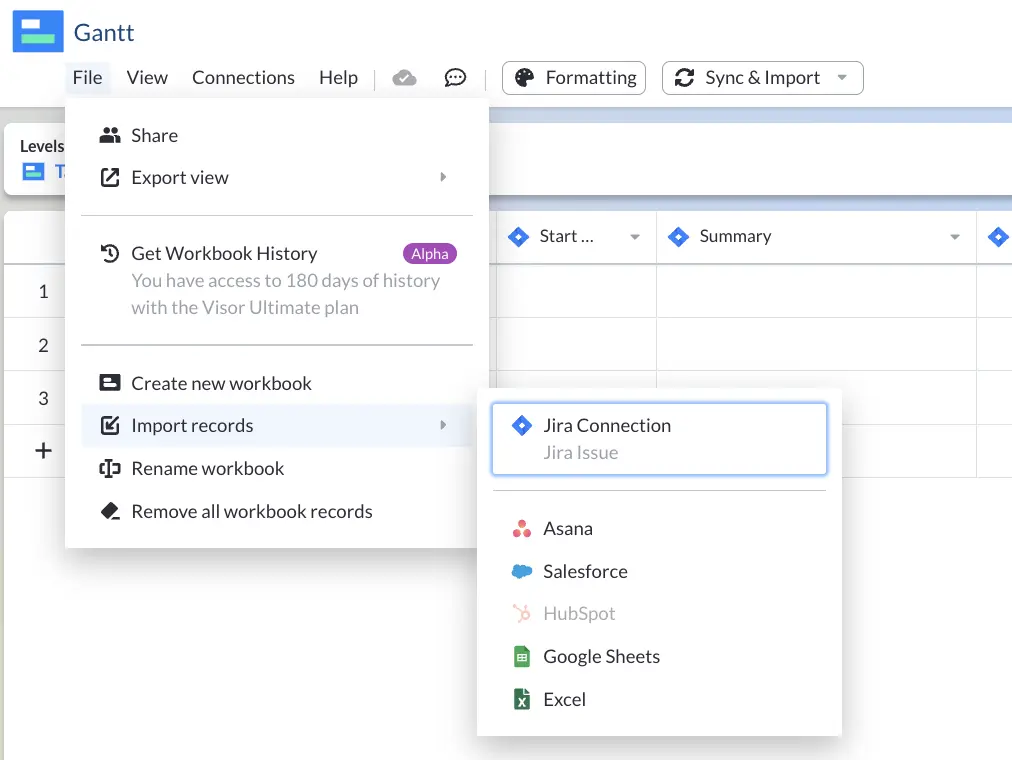
Step 2: Once data is in Visor’s Table view, switch to “Gantt view” to plot your data.
You will need Start and End (or Due) Date fields to plot your Gantt. If you don’t have these fields in Jira, you can create custom fields in Visor to help you plot your chart.
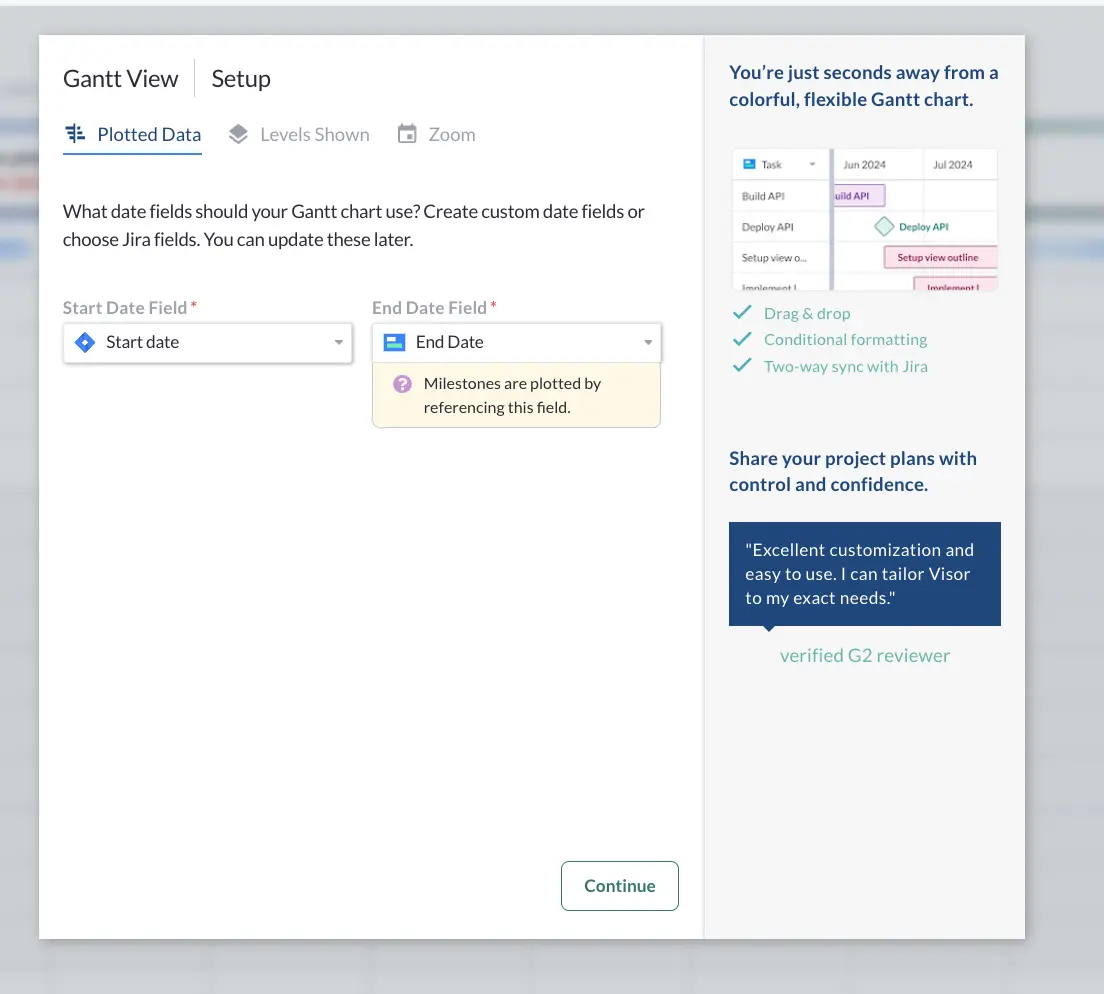
Step 3: Decide the amount of nesting you want displayed.
Visor imports your nested hierarchies. You can always add or remove filters later on, too.
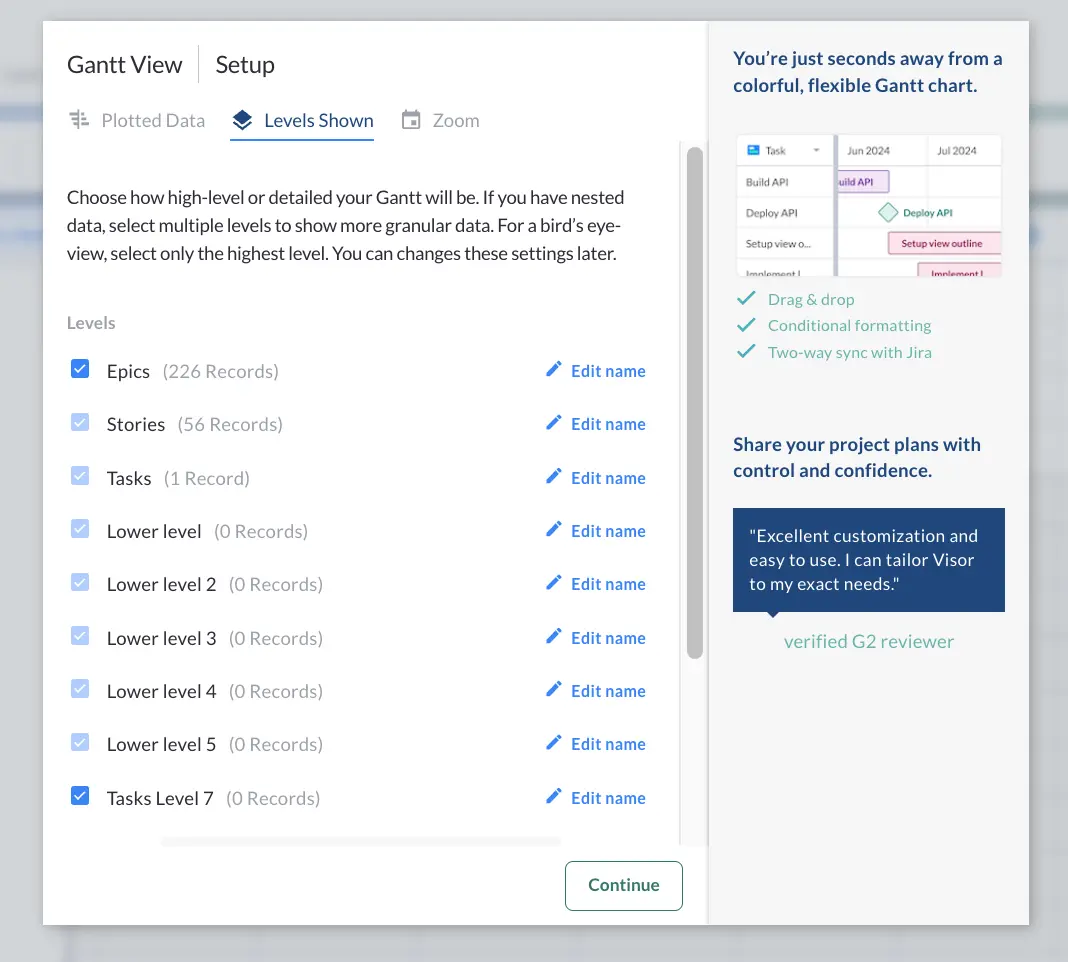
Step 4: Decide how zoomed in or out you want your Gantt to be.
You can choose weeks & days, sprints, months, or even years.
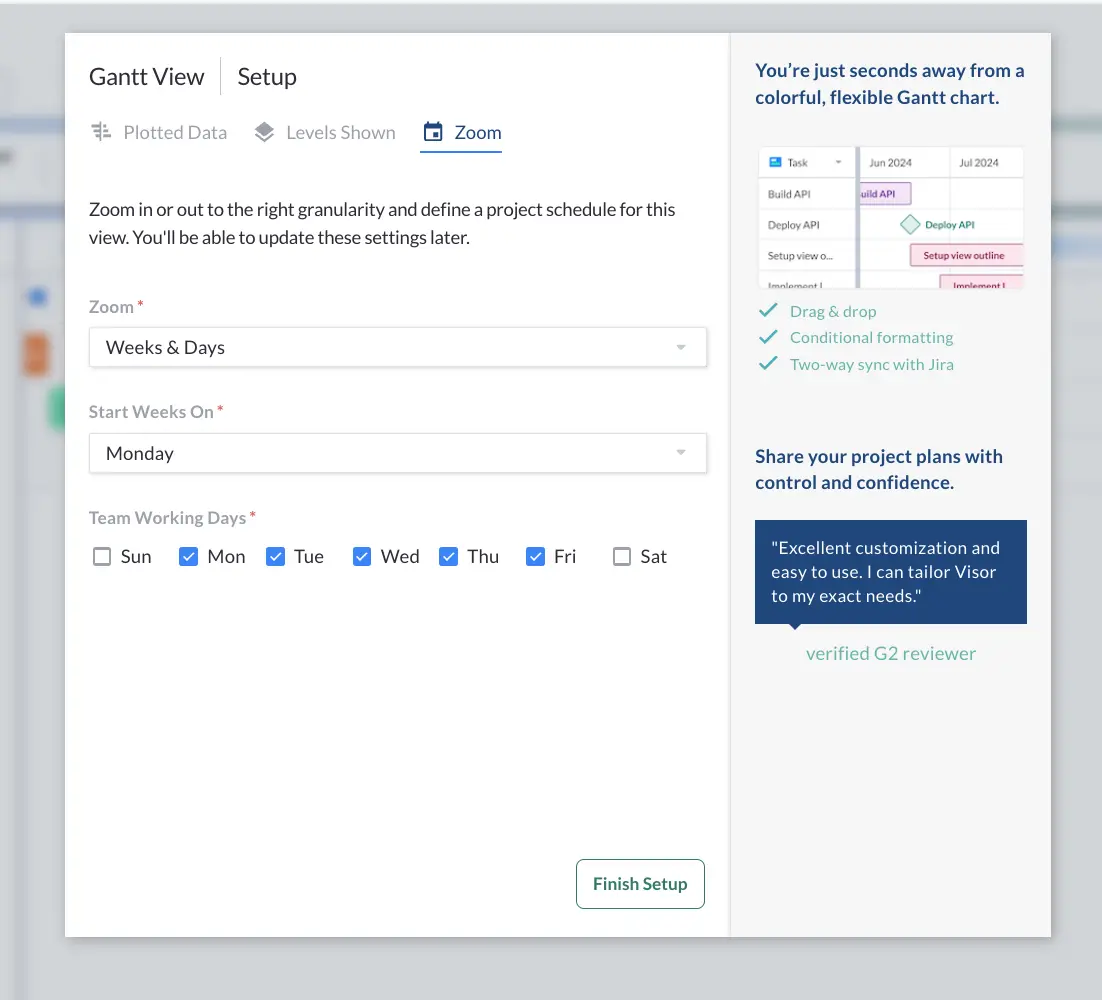
Step 5: Once your Gantt chart is plotted, click “Formatting” to select what field you want color coded. Here, the bars displayed are the “Assignee” field.
You can choose weeks & days, sprints, months, or even years.
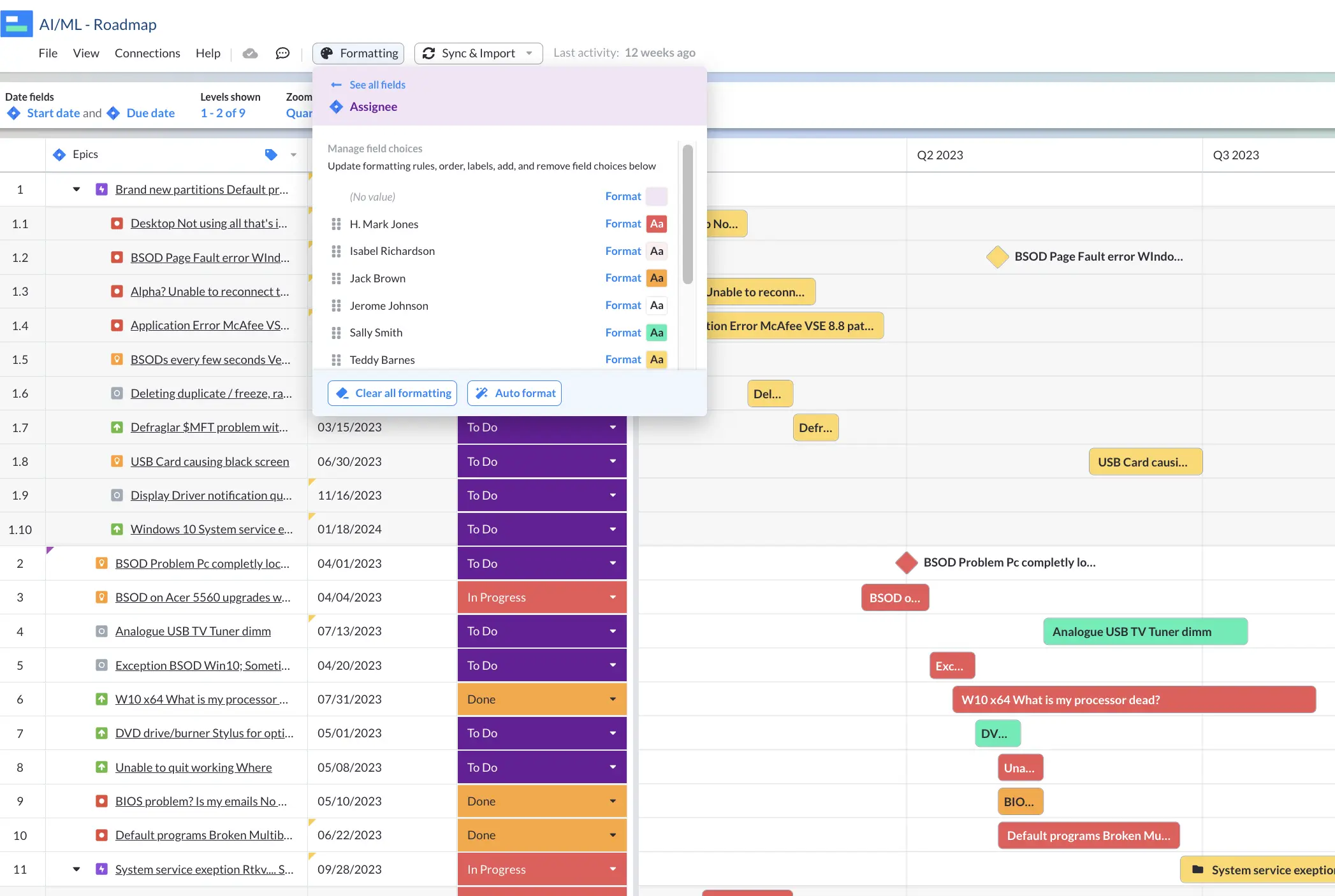
Step 6: You can choose to use Visor’s color presets or add RGB colors that are exactly to your liking.
Visor offers auto-formatting, color presets, and the ability to choose the exact HEX colors you want.
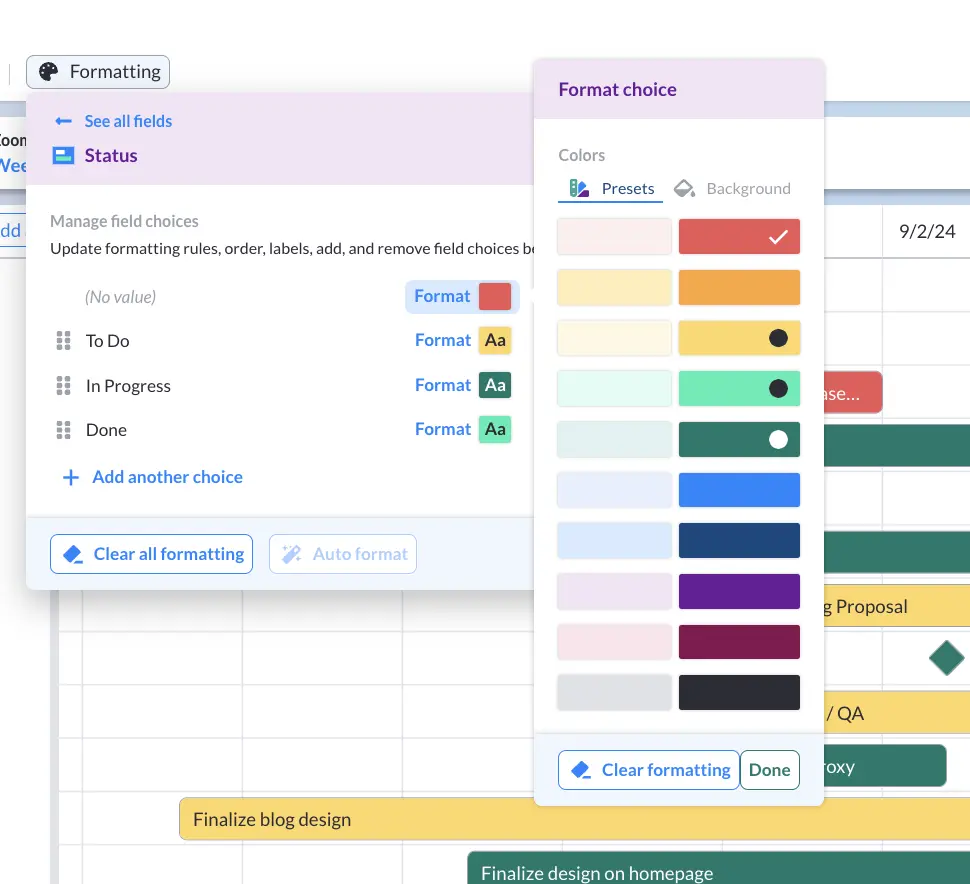
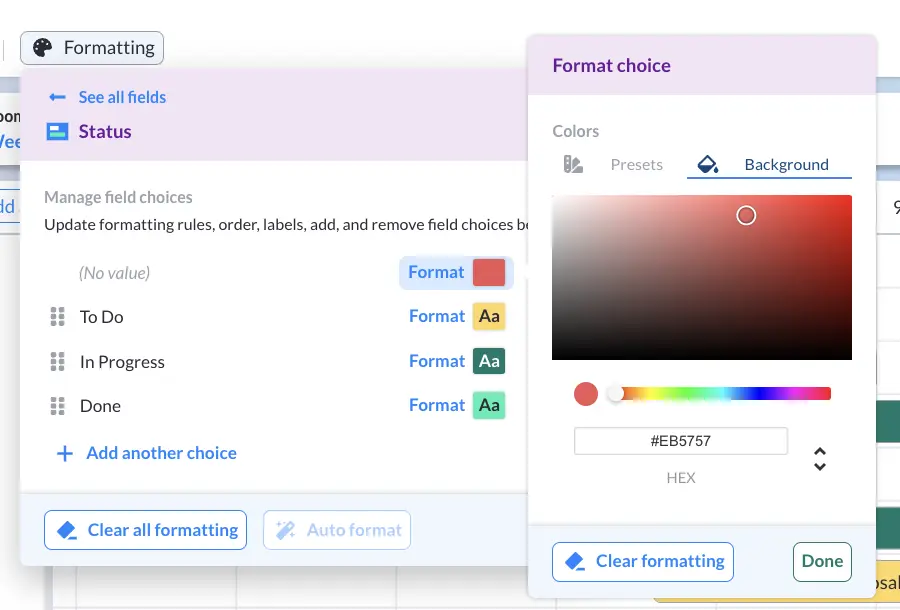
Step 7: Once your Gantt chart’s bars have color, click on a bar if you want to make it a milestone. Milestones convey that this is an important date.
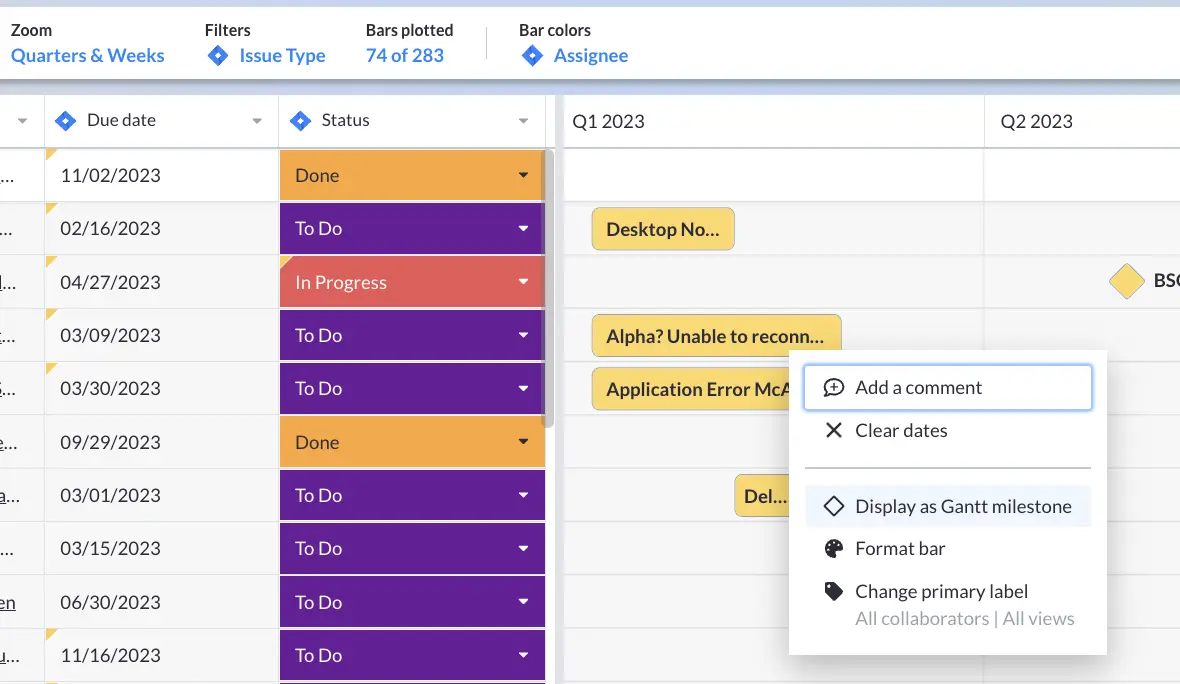
Step 8: You can move your Gantt chart’s bars around with Visor’s drag-and-drop interface. This allows you to adjust the timing of your project plans.
Note: the data won’t automatically update in Jira. You must push out any changes you make in Visor to Jira for that to happen.
Step 9: When your Gantt chart is done, you can share with whoever you please!
You can share your Jira roadmap with stakeholders, clients, or team members who don’t use Jira.
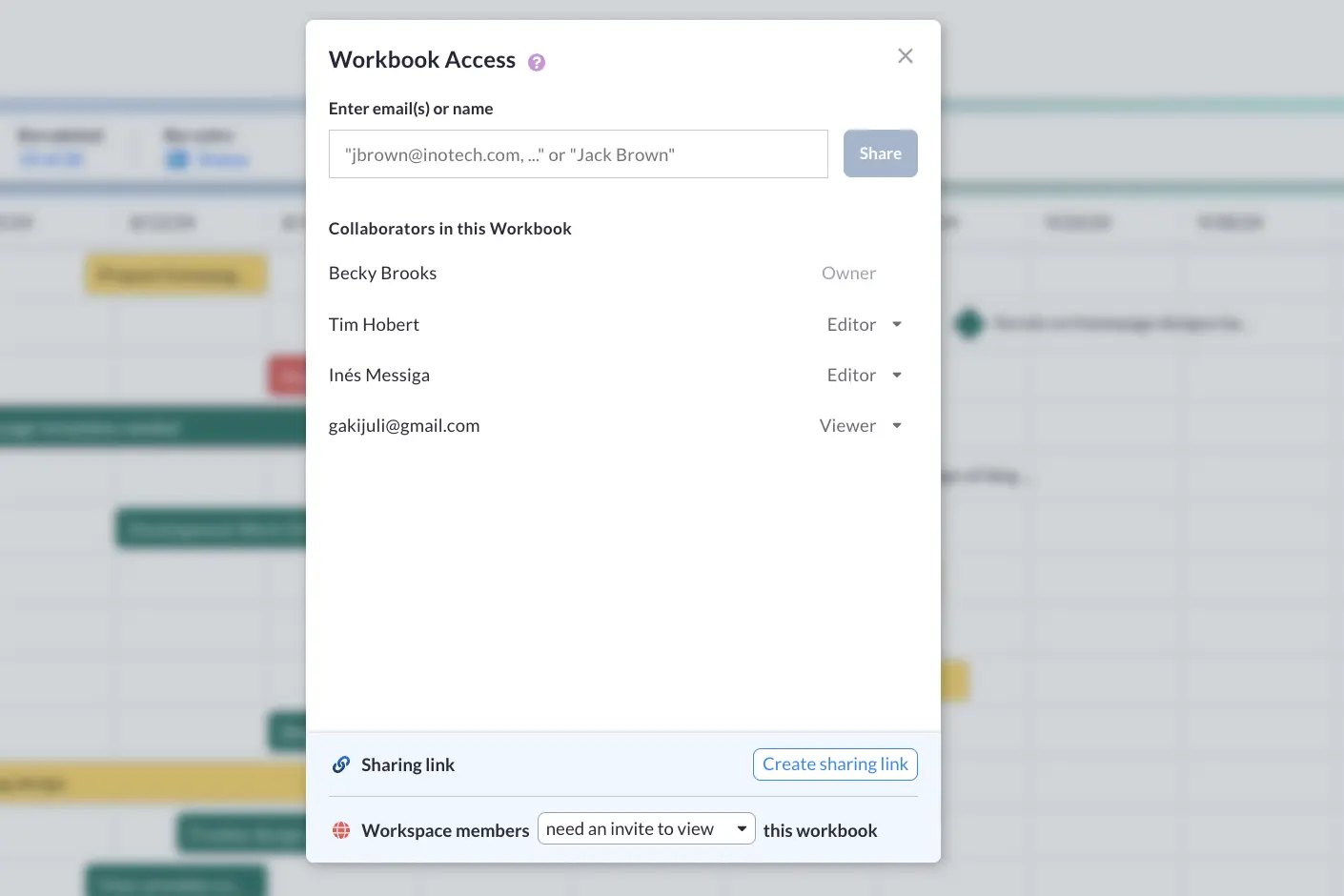
Video Tutorial: Jira Milestones in Visor
If you’d like to see exactly how to use Jira milestones in Visor, take a look at the tutorial below. We also have a whole Gantt chart milestone guide if you want more information about milestones.
How do you assign a milestone?
Typically milestones are not assigned, since they represent important dates rather than tasks. However, if you wanted to assign a milestone to someone in Visor that would be possible. You could turn a task assigned to someone into a milestone.
For example, you could have a task indicating a team member should publish a blog post. The blog post can be a milestone if it represents an important marker – say it represents a 100th blog post.
What are some common use cases for Jira Milestones?
While there is no native option for milestones in Jira, that doesn’t mean there are no use cases for them. There’s a huge range of ways people use project milestones. Here are some of the most popular ways Visor users can take advantage of our Milestone feature together with their Jira data:
Tracking dates with Jira Milestones
There are some hard dates that can’t be changed. Being able to visualize those immovable dates along with other Jira tasks, bugs, etc. lets you keep your eye on important targets.
Prioritization with Jira Milestones
Milestones give you the ability to to prioritize across multiple views and using multiple filters, allowing you to see the tasks you need without losing sight of major events or dates.
Reporting dates to stakeholders
Sometimes working with Jira means explaining your progress to leadership and other non-Jira users. That becomes a lot easier with milestones offering a clear visual indicator that you’re making progress and hitting targets.
Breaking up releases with Jira Milestones
Milestones let you divide your releases in a way that’s simpler to understand. For instance, you can identify when a project reaches MVP and when additions to a release come in. This gives you the ability to absorb a big release in smaller easy-to-digest phases.
Provide visual context with Jira Milestones
Every now and then, events happen outside the usual Jira ticket scope. By linking up your Jira data with Visor, you can add in milestones, highlighting those events. These markers help you see and plan for special events (like industry trade shows) and add a bit of context.
Agile teams forced to make a Gantt chart
Yes, Agile Gantt charts might sound like an oxymoron. However, Milestones can help Agile teams commit to a broader set of work, allowing more space for iteration. We wrote a whole guide on making Agile Gantts using Jira.
Whatever your use case, adding Milestones is often a good idea.
You cannot add milestones to Jira Advanced Roadmaps or Jira’s (free) Timeline Roadmap feature (learn more about the differences between Jira Timeline and Advanced Roadmaps (also known as Jira Plans).
However, you can use Visor to create Jira Roadmaps that have milestones, even if you are using the Jira free plan. Milestones help make your roadmap clear to stakeholders, your team, and even yourself.
Conclusion: Get Jira Milestones with Visor
Though it’s difficult to get true milestone functionality in Jira, that doesn’t mean you can’t add them to your Jira data. Visor gives you access to the ability to add milestones that are fully integrated with the rest of your Jira data and displayed in an easy-to-understand, eye-catching way.
If you’d like to learn more about milestones in Visor, get in touch! We’d be happy to show you how you can add milestones to your data.




